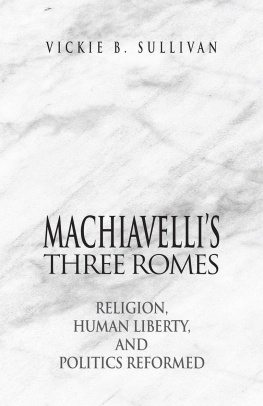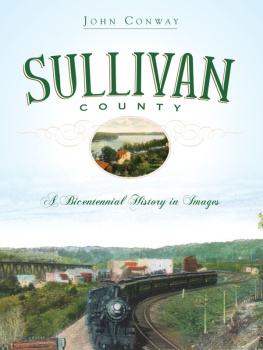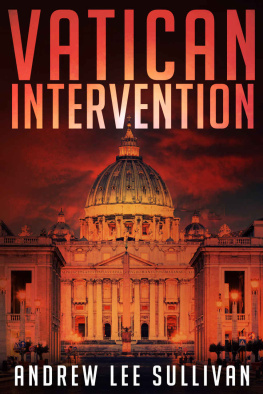
1. The apotheosis of Timothy D. Sullivan. Big Tim as depicted on the menu of a banquet given in his honor at the Hoffman House, 1901. Courtesy of the Rare Books Division, the New York Public Library, Astor, Lenox, and Tilden Foundation.
King of the Bowery
Big Tim Sullivan, Tammany Hall,
and New York City from
the Gilded Age to the Progressive Era
Richard F. Welch
Published by
STATE UNIVERSITY OF NEW YORK PRESS, ALBANY
2008 Rosemont Publishing and Printing Corp.
All rights reserved
Printed in the United States of America
Originally published in 2008 by Fairleigh Dickinson University Press.
First Excelsior Editions paperback printing, 2010.
Excelsior Editions is an imprint of State University of New York Press, Albany.
No part of this book may be used or reproduced in any manner whatsoever without written permission. No part of this book may be stored in a retrieval system or transmitted in any form or by any means including electronic, electrostatic, magnetic tape, mechanical, photocopying, recording, or otherwise without the prior permission in writing of the publisher.
For information, contact
STATE UNIVERSITY OF NEW YORK PRESS, ALBANY, NY
www.sunypress.edu
Production, Laurie Searl
Marketing, Fran Keneston
Library of Congress Cataloging-in-Publication Data
Welch, Richard F.
King of the Bowery : Big Tim Sullivan,Tammany Hall, and New York City from the Gilded Age to the Progressive Era / Richard F.Welch.
p. cm.
Originally published: Madison [N.J.] : Fairleigh Dickinson University Press, c2008. Includes bibliographical references and index.
ISBN 9781438431826 (pbk. : alk. paper)
1. Sullivan,Timothy Daniel, 18621913. 2. LegislatorsUnited StatesBiography. 3. United States. Congress. HouseBiography. 4. PoliticiansNew York (State)New YorkBiography. 5. Tammany HallHistory. 6. New York (N.Y.)Politics and government19th century. 7. New York (N.Y.)Politics and government20th century. 8. Political corruptionNew York (State)New YorkHistory. 9. New York (N.Y.)Biography. I.Title.
E664.S95W45 2009
974.7'044092--dc22
[B]
2009029113
10 9 8 7 6 5 4 3 2 1
For Bill and MikeFor Everything
Acknowledgments
M ANY INDIVIDUALS AND INSTITUTIONS PROVIDED CRUCIAL EXPERTISE and support in the creation of this book. The author would like to thank Corie Trancho-Robie and the staff at Columbia University's Oral History Research Office for permission to quote from Columbia's extensive oral history collections. Likewise, a tip of the hat to the librarians at Hofstra University, C.W. Post College, Long Island University, and Stony Brook University who provided expert assistance in accessing their microfilm collections.
Professor Wilbur R. Miller of Stony Brook University and Deborah Gershenowitz of the New York University Press read the manuscript, and volunteered thoughtful observations and helpful suggestions. The book has benefited greatly from their input. A special nod of appreciation is due Kevin Baker who enthusiastically shared his extensive knowledge of New York history and long experience in writing and publishing as I struggled to get the project off the ground. Similarly a note of gratitude is owed Harry Keyishian and the staff and readers at Farleigh-Dickinson University Press who recognized the drama and significance of Big Tim Sullivan's career and opted to take on the project. Lastly, thanks to Christine Retz, Managing Editor at Associated University Presses, for cheerfully guiding authors through the minefields of book preparation and academic publishing.
Introduction
T HE FIGURE OF TIMOTHY DANIEL BIG TIM SULLIVAN LOOMED over New York from the 1880s to 1913 in ways few others could match. Revered, respected, and loved in the congested neighborhoods of the Lower East Side of Manhattan, he was feared and loathed in those precincts dominated by the respectable classes. Sullivan wielded more political power than any other contemporary, and though a member of the Tammany Hall Democratic machine, he ran his own fiefdom in the Bowery as a personal satrap. Although he declined the role of Tammany boss for himself, no one could assume that position without his consent. While the Lower East Side always remained his power base, Sullivan continuously broadened his political reach until it extended across the length and breadth of New York City. The open-handed social and economic support he provided his constituents was legendary long before he died, and his legitimate investments helped nurture live theater and film. On the other hand, his involvement with vice, especially gambling, and his friendships with underworld figures, tainted his personal and political reputation.
Paradoxically, Big Tim Sullivan became not only the last great practitioner of nineteenth-century urban politics, but an early supporter of progressive legislation in New York State, confounding his enemies and again delighting his followers. For the working classes and poor, the new immigrants and their children, Big Tim was leader, advisor, fixer, banker, employment officer, social worker and, when the need arose, funeral director. The day before his own funeral a steady stream of New Yorkers filed past his bier tendering their last respects. The following day the streets of the Bowery were jammed with 20,000 mourners straining for a glimpse of the cortege as it rolled through lower Manhattan and across the Williamsburg Bridge to Calvary Cemetery.
Big Tim's fame was so great, his energies so strong and his accomplishmentsin the eyes of many New Yorkersso obvious, that it seemed as if his place in the pantheon of New York politicians was both fixed and exalted. For a brief time it was. But the onset of a world war, the self-destruction of Tammany Hall under Mayor Jimmy Walker, and the catastrophe of the Great Depression quickly relegated Tim Sullivan's life and career to that of a dimly recalled memory. His eraits passions, pastimes, failings, and achievementswere reduced to a few dry sentences in textbooks, and Tim's legend faded away until, like the Cheshire Cat, all that remained was a smilea vague recollection of a powerful, slightly roguish politico from a vanished world. Perhaps a few others remembered the Sullivan in New York's famous Sullivan Law which made it illegal to carry a concealed weapon without a permit. Otherwise, even in most studies of the politics of the time, Tim Sullivan slid down a memory hole.
But examining nineteenth and early twentieth-century urban politics without Big Tim Sullivan is like discussing the 1960s without the Kennedys. He stood at its center, he made it go, he gave it its juice, and if he was hobbled by the limitations of his traditions and outlook, he proved a feisty harbinger of the measures and methods which triumphed in the 1930s. Sullivan was a master of mass politics in an age when personal contact was everything. The loyalty he engendered in the multi-ethnic population below Fourteenth Street was based on his bighearted solicitude for his constituents. He gave them jobs, provided housing, and organized the largest and most celebrated social outings in New York. Moreover, he became an early and aggressive proponent of Progressive reform in labor and women's issues.








 1. The apotheosis of Timothy D. Sullivan. Big Tim as depicted on the menu of a banquet given in his honor at the Hoffman House, 1901. Courtesy of the Rare Books Division, the New York Public Library, Astor, Lenox, and Tilden Foundation.
1. The apotheosis of Timothy D. Sullivan. Big Tim as depicted on the menu of a banquet given in his honor at the Hoffman House, 1901. Courtesy of the Rare Books Division, the New York Public Library, Astor, Lenox, and Tilden Foundation.
